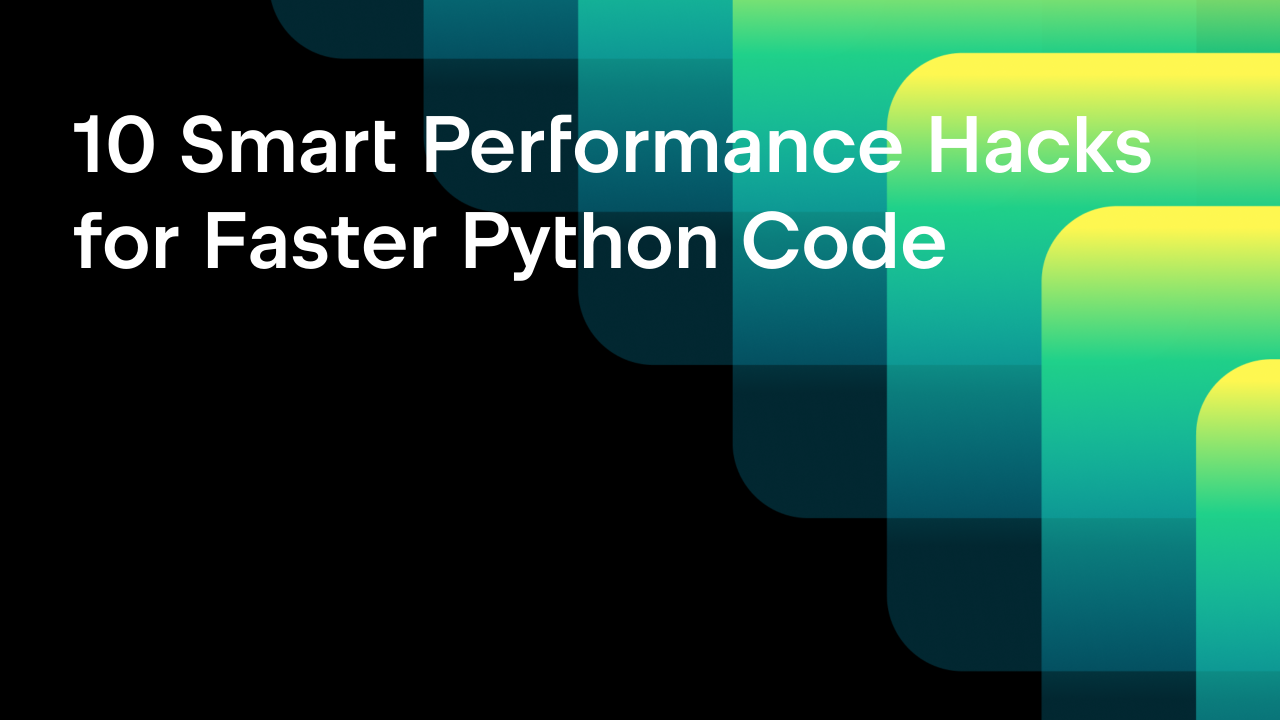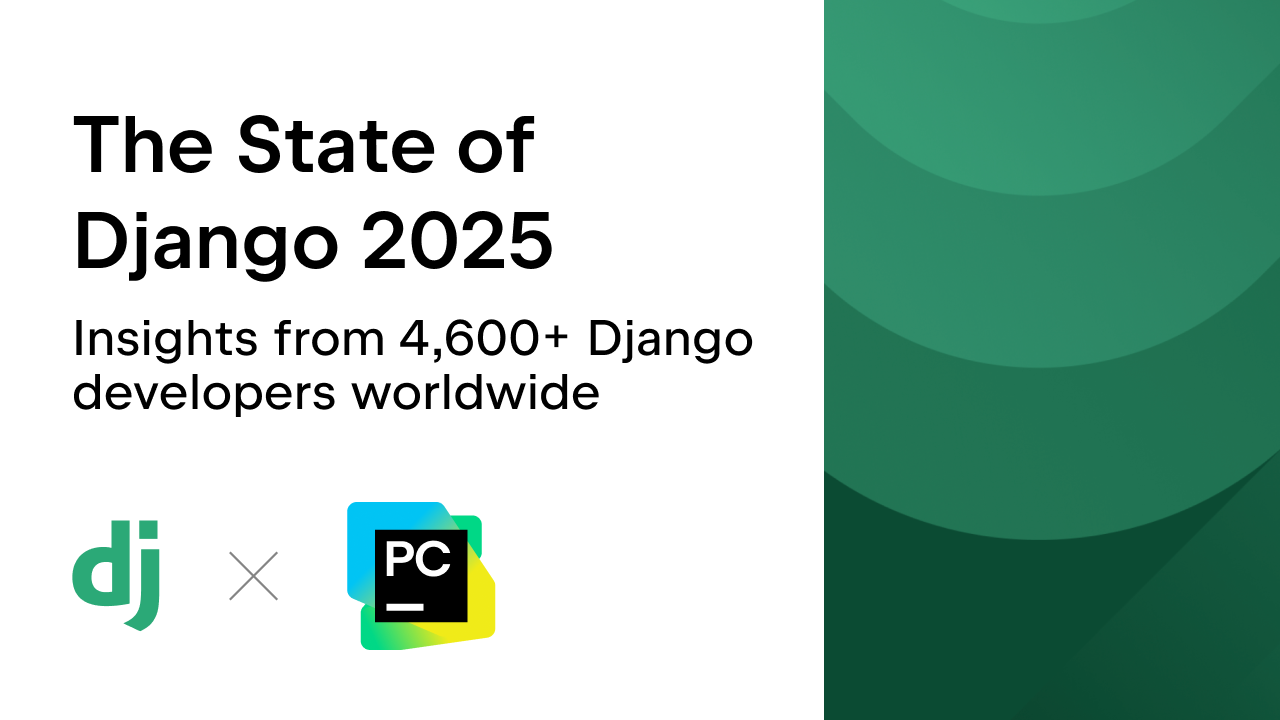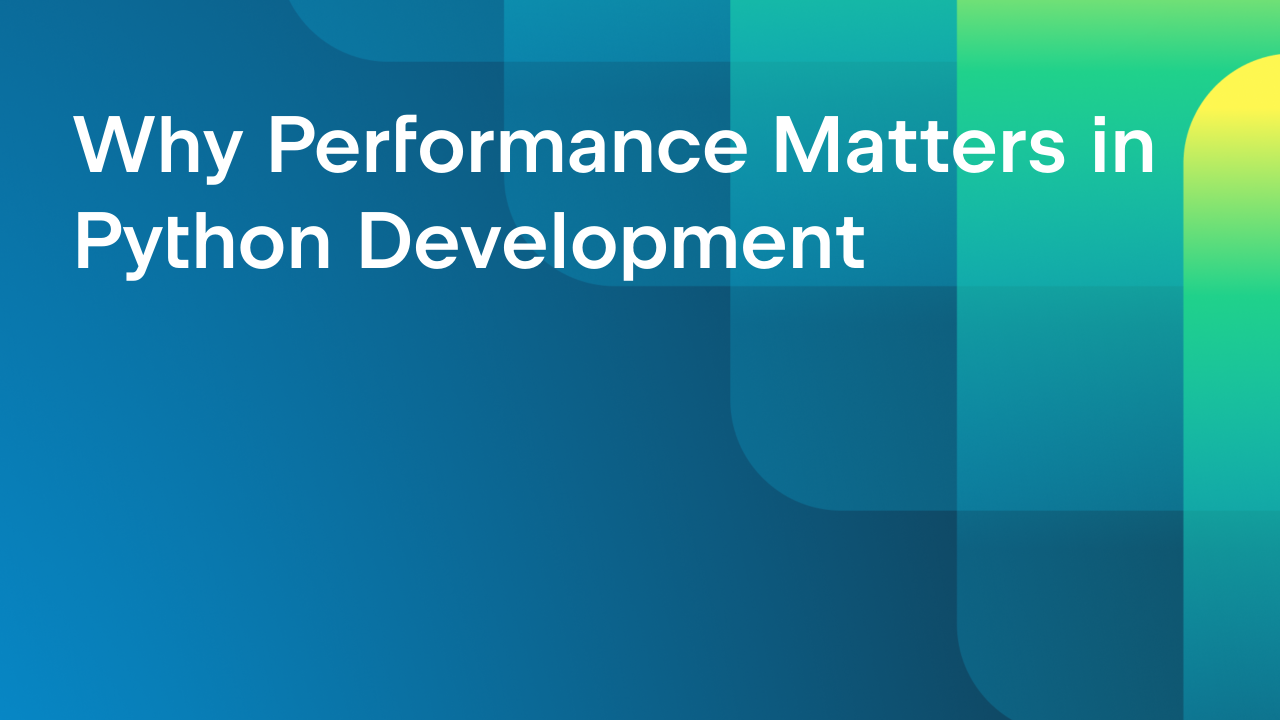Which Is the Best Python Web Framework: Django, Flask, or FastAPI?

Search for Python web frameworks, and three names will consistently come up: Django, Flask, and FastAPI. Our latest Python Developer Survey Results confirm that these three frameworks remain developers’ top choices for backend web development with Python.
All three frameworks are open-source and compatible with the latest versions of Python.
But how do you determine which web framework is best for your project? Here, we’ll look at the pros and cons of each and compare how they stack up against one another.
Django
Django is a “batteries included”, full-stack web framework used by the likes of Instagram, Spotify, and Dropbox, to name but a few. Pitched as “the web framework for perfectionists with deadlines”, the Django framework was designed to make it easier and quicker to build robust web apps.
First made available as an open-source project in 2005, Django is a mature project that remains in active development 20 years later. It’s suitable for many web applications, including social media, e-commerce, news, and entertainment sites.
Django follows a model-view-template (MVT) architecture, where each component has a specific role. Models are responsible for handling the data and defining its structure. The views manage the business logic, processing requests and fetching the necessary data from the models. Finally, templates present this data to the end user – similar to views in a model-view-controller (MVC) architecture.
As a full-stack web framework, Django can be used to build an entire web app (from database to HTML and JavaScript frontend).
Alternatively, you can use the Django REST Framework to combine Django with a frontend framework (such as React) to build both mobile and browser-based apps.
Explore our comprehensive Django guide, featuring an overview of prerequisite knowledge, a structured learning path, and additional resources to help you master the framework.
Django advantages
There are plenty of reasons why Django remains one of the most widely used Python web frameworks, including:
- Extensive functionality: With a “batteries included” approach, Django offers built-in features like authentication, caching, data validation, and session management. Its don’t repeat yourself (DRY) principle speeds up development and reduces bugs.
- Ease of setup: Django simplifies dependency management with its built-in features, reducing the need for external packages. This helps streamline the initial setup and minimizes compatibility issues, so you can get up and running sooner.
- Database support: Django’s ORM (object-relational mapping) makes data handling more straightforward, enabling you to work with databases like SQLite, MySQL, and PostgreSQL without needing SQL knowledge. However, it’s less suitable for non-relational databases like MongoDB.
- Security: Built-in defenses against common vulnerabilities such as cross-site scripting (XSS), SQL injection, and clickjacking help quickly secure your app from the start.
- Scalability: Despite being monolithic, Django allows for horizontal scaling of the application’s architecture (business logic and templates), caching to ease database load, and asynchronous processing to improve efficiency.
- Community and documentation: Django has a vast, active community and detailed documentation, with tutorials (such as developing a Django app using AWS) and support readily available.
Django disadvantages
Despite its many advantages, there are a few reasons you might want to look at options other than Django when developing your next web app.
- Heavyweight: Its “batteries included” design can be too much for smaller apps, where a lightweight framework like Flask may be more appropriate.
- Learning curve: Django’s extensive features naturally come with a steeper learning curve, though there are plenty of resources available to help new developers.
- Performance: Django is generally slower compared to other frameworks like Flask and FastAPI, but built-in caching and asynchronous processing can help improve the response times.
Flask
Flask is a Python-based micro-framework for backend web development. However, don’t let the term “micro” deceive you. As we’ll see, Flask isn’t only limited to smaller web apps.
Instead, Flask is designed with a simple core based on Werkzeug WSGI (Web Server Gateway Interface) and Jinja2 templates. Well-known users of Flask include Netflix, Airbnb, and Reddit.
Flask was initially created as an April Fools’ Day joke and released as an open-source project in 2010, a few years after Django. The micro-framework’s approach is fundamentally different from Django’s. While Django takes a “batteries included” style and comes with a lot of the functionality you may need for building web apps, Flask is much leaner.
The philosophy behind the micro-framework is that everyone has their preferences, so developers should be free to choose their own components. For this reason, Flask doesn’t include a database, ORM (object-relational mapper), or ODM (object-document mapper).
When you build a web app with Flask, very little is decided for you upfront. This can have significant benefits, as we’ll discuss below.
Flask advantages
We’ve seen usage of Flask grow steadily over the last five years through our State of the Developer Ecosystem survey – it overtook Django for the first time in 2021.
Some reasons for choosing Flask as a backend web framework include:
- Lightweight design: Flask’s minimalist approach offers a flexible alternative to Django, making it ideal for smaller applications or projects where Django’s extensive features may feel excessive. However, Flask isn’t limited to small projects – you can extend it as needed.
- Flexibility: Flask allows you to choose the libraries and frameworks for core functionality, such as data handling and user authentication. This enables you to select the best tools for your project and extend it in unforeseen ways.
- Scalability: Flask’s modular design makes it easy to scale horizontally. Using a NoSQL database layer can further enhance scalability.
- Shallow learning curve: Its simple design makes Flask easy to learn, though you may need to explore extensions for more complex apps.
- Community and documentation: Flask has extensive (if somewhat technical) documentation and a clear codebase. While its community is smaller than Django’s, Flask remains active and is growing steadily.
Flask disadvantages
While Flask has a lot to offer, there are a few things to consider before you decide to use it in your next web development project.
- Bring your own everything: Flask’s micro-framework design and flexibility require you to handle much of that core functionality, including data validation, session management, and caching. While this flexibility can be beneficial, it can also slow the development process, as you’ll need to find existing libraries or build features from scratch. Additionally, dependencies must be managed over time to ensure they remain compatible with Flask.
- Security: Flask has minimal built-in security. Beyond securing client-side cookies, you must implement web security best practices and ensure the security of the dependencies you include, applying updates as needed.
- Performance: While Flask performs slightly better than Django, it lags behind FastAPI. Flask offers some ASGI support (the standard used by FastAPI), but it is more tightly tied to WSGI.
FastAPI
As the name suggests, FastAPI is a micro-framework for building high-performance web APIs with Python. Despite being relatively new – it was first released as an open-source project in 2018 – FastAPI has quickly become popular among developers, ranking third in our list of the most popular Python web frameworks since 2021.
FastAPI is based on Uvicorn, an ASGI (Asynchronous Server Gateway Interface) server, and Starlette, a web micro-framework. FastAPI adds data validation, serialization, and documentation to streamline building web APIs.
When developing FastAPI, the micro-framework’s creator drew on the experiences of working with many different frameworks and tools. Whereas Django was developed before frontend JavaScript web frameworks (such as React or Vue.js) were prominent, FastAPI was designed with this context in mind.
The emergence of OpenAPI (formerly Swagger) as a format for structuring and documenting APIs in the preceding years provided an industry standard that FastAPI could leverage.
Beyond the implicit use case of creating RESTful APIs, FastAPI is ideal for applications that require real-time responses, such as messaging platforms and dashboards. Its high performance and asynchronous capabilities make it a good fit for data-intensive apps, including machine learning models, data processing, and analytics.
FastAPI advantages
FastAPI first received its own category in our State of the Developer Ecosystem survey in 2021, with 14% of respondents using the micro-framework.
Since then, usage has increased to 20%, alongside a slight dip in the use of Flask and Django.
These are some of the reasons why developers are choosing FastAPI:
- Performance: Designed for speed, FastAPI supports asynchronous processing and bi-directional web sockets (courtesy of Starlette). It outperformed both Django and Flask in benchmark tests, making it ideal for high-traffic applications.
- Scalability: Like Flask, FastAPI is highly modular, making it easy to scale and ideal for containerized deployments.
- Adherence to industry standards: FastAPI is fully compatible with OAuth 2.0, OpenAPI (formerly Swagger), and JSON Schema. As a result, you can implement secure authentication and generate your API documentation with minimal effort.
- Ease of use: FastAPI use of Pydantic for type hints and validation speeds up development by providing type checks, auto-completion, and request validation.
- Documentation: FastAPI comes with a sizable body of documentation and growing third-party resources, making it accessible for developers at all levels.
FastAPI disadvantages
Before deciding that FastAPI is the best framework for your next project, bear in mind the following:
- Maturity: FastAPI, being newer, lacks the maturity of Django or Flask. Its community is smaller, and the user experience may be less streamlined due to less extensive use.
- Compatibility: As a micro-framework, FastAPI requires additional functionality for fully featured apps. There are fewer compatible libraries compared to Django or Flask, which may require you to develop your own extensions.
Choosing between Flask, Django, and FastAPI
So, which is the best Python web framework? As with many programming things, the answer is “it depends”.
The right choice hinges on answering a few questions: What kind of app are you building? What are your priorities? How do you expect your project to grow in the future?
All three popular Python web frameworks come with unique strengths, so assessing them in the context of your application will help you make the best decision.
Django is a great option if you need standard web app functionality out of the box, making it suitable for projects that require a more robust structure. It’s particularly advantageous if you’re using a relational database, as its ORM simplifies data management and provides built-in security features. However, the extensive functionality may feel overwhelming for smaller projects or simple applications.
Flask, on the other hand, offers greater flexibility. Its minimalist design enables developers to pick and choose the extensions and libraries they want, making it suitable for projects where you need to customize features. This approach works well for startups or MVPs, where your requirements might change and evolve rapidly. While Flask is easy to get started with, keep in mind that building more intricate applications will mean exploring various extensions.
FastAPI is a strong contender when speed is of the essence, especially for API-first or machine learning projects. It uses modern Python features like type hints to provide automatic data validation and documentation. FastAPI is an excellent choice for applications that need high performance, like microservices or data-driven APIs. Despite this, it may not be as feature-rich as Django or Flask in terms of built-in functionality, which means you might need to implement additional features manually.
For a deeper comparison between Django and the different web frameworks, check out our other guides, including:
Python web framework overview
| Django | Flask | FastAPI | |
| Design philosophy | Full-stack framework designed for web apps with relational databases. | Lightweight backend micro-framework. | Lightweight micro-framework for building web APIs. |
| Ease of use | “Batteries included” approach means everything you need is in the box, accelerating development. That said, the amount of functionality available can present a steep learning curve. | As Flask is a micro-framework, there is less code to familiarize yourself with upfront.High levels of flexibility to choose your preferred libraries and extensions. However, having less functionality built in requires more external dependencies. | Like Flask, less functionality is built in than with Django. Type hints and validation speed up development and reduce errors. Compatible with OpenAPI for automatic API reference docs. |
| Extensibility | Largest selection of compatible packages out of the three. | Large number of compatible packages. | Fewer compatible packages than Flask or Django. |
| Performance | Good, but not as fast as Flask or FastAPI. | Slightly faster than Django but not as performant as FastAPI. | Fastest of the three. |
| Scalability | Monolithic design can limit scalability. Support for async processing can improve performance under high load. | Highly scalable thanks to a lightweight and modular design. | Highly scalable thanks to a lightweight and modular design. |
| Security | Many cybersecurity defenses built in. | Client-side cookies secured by default. Other security protections need to be added, and dependencies should be checked for vulnerabilities. | Support for OAuth 2.0 out of the box. Other security protections need to be added, and dependencies should be checked for vulnerabilities. |
| Maturity | Open source since 2005 and receives regular updates. | Open source since 2010 and receives regular updates. | Open source since 2018 and receives regular updates. |
| Community | Large and active following. | Active and likely to keep growing as Flask remains popular. | Smaller following than Django or Flask. |
| Documentation | The most active and robust official documentation. | Extensive official documentation. | The least active official documentation, given its age. |
Further reading
- The State of Django 2024
- What is the Django Web Framework?
- How to Learn Django
- An Introduction to Django Views
- The Ultimate Guide to Django Templates
- Django Project Ideas
Start your web development project with PyCharm
Regardless of your primary framework, you can access all the essential web development tools in a single IDE. Full-stack Python IDE for Django, Flask & FastAPI provides built-in support for Django, FastAPI, and Flask, while also offering top-notch integration with frontend frameworks like React, Angular, and Vue.js.
Subscribe to PyCharm Blog updates








